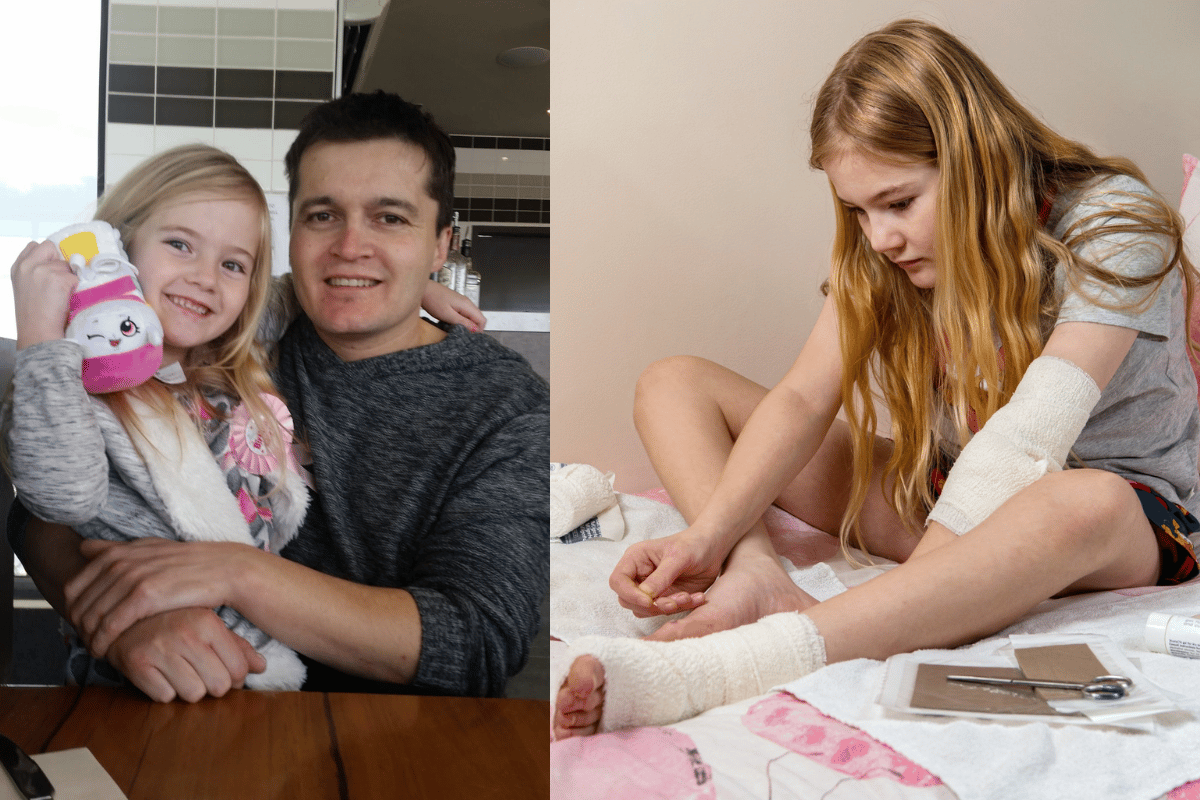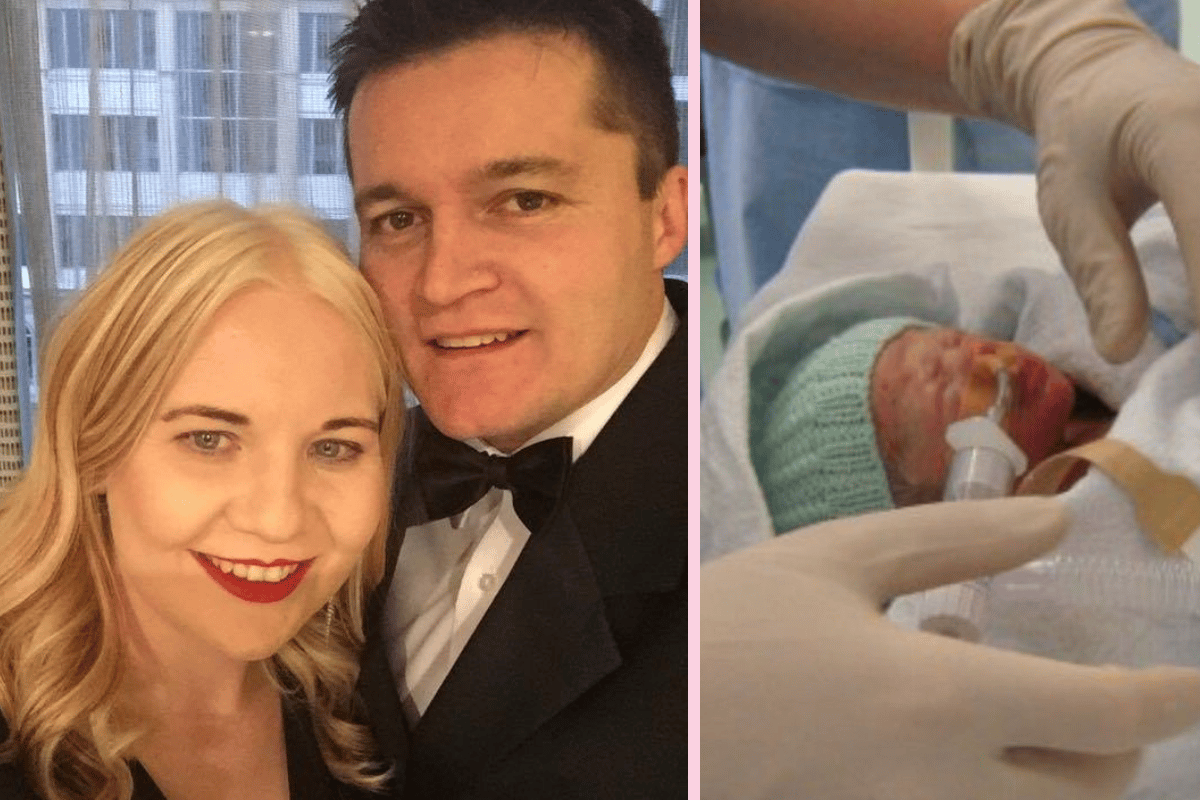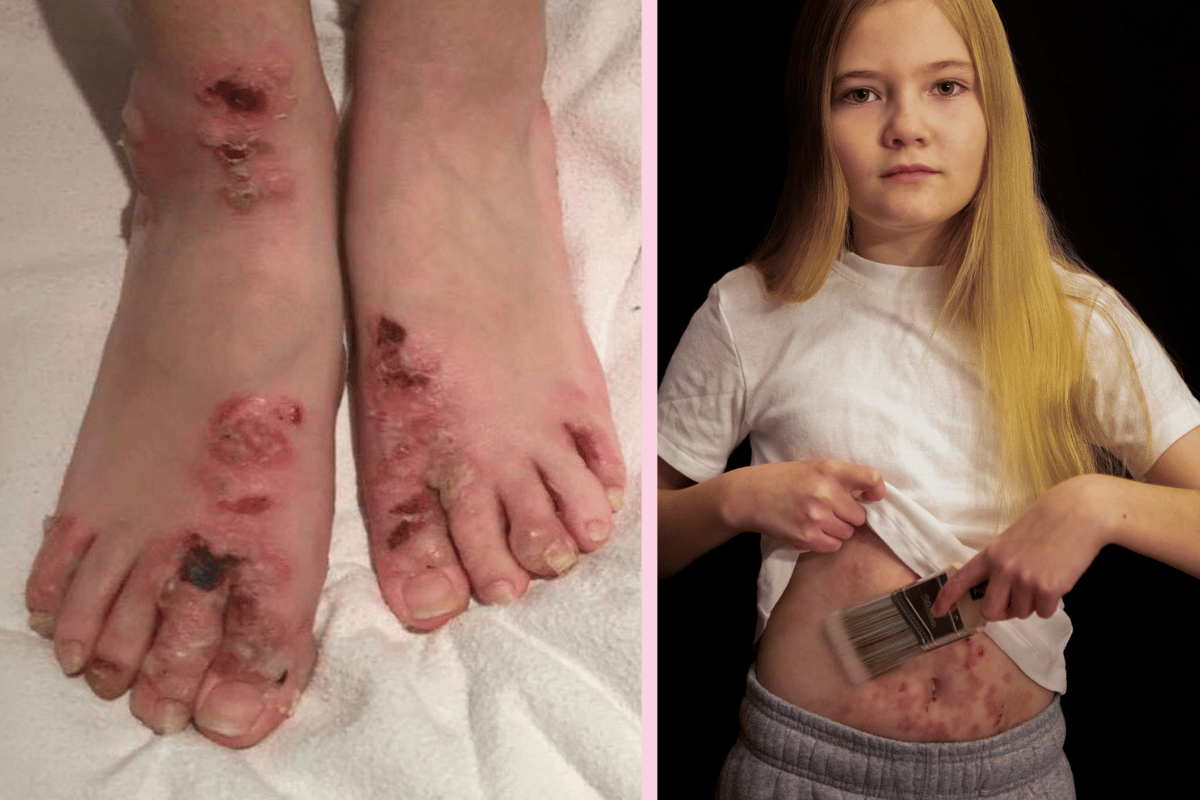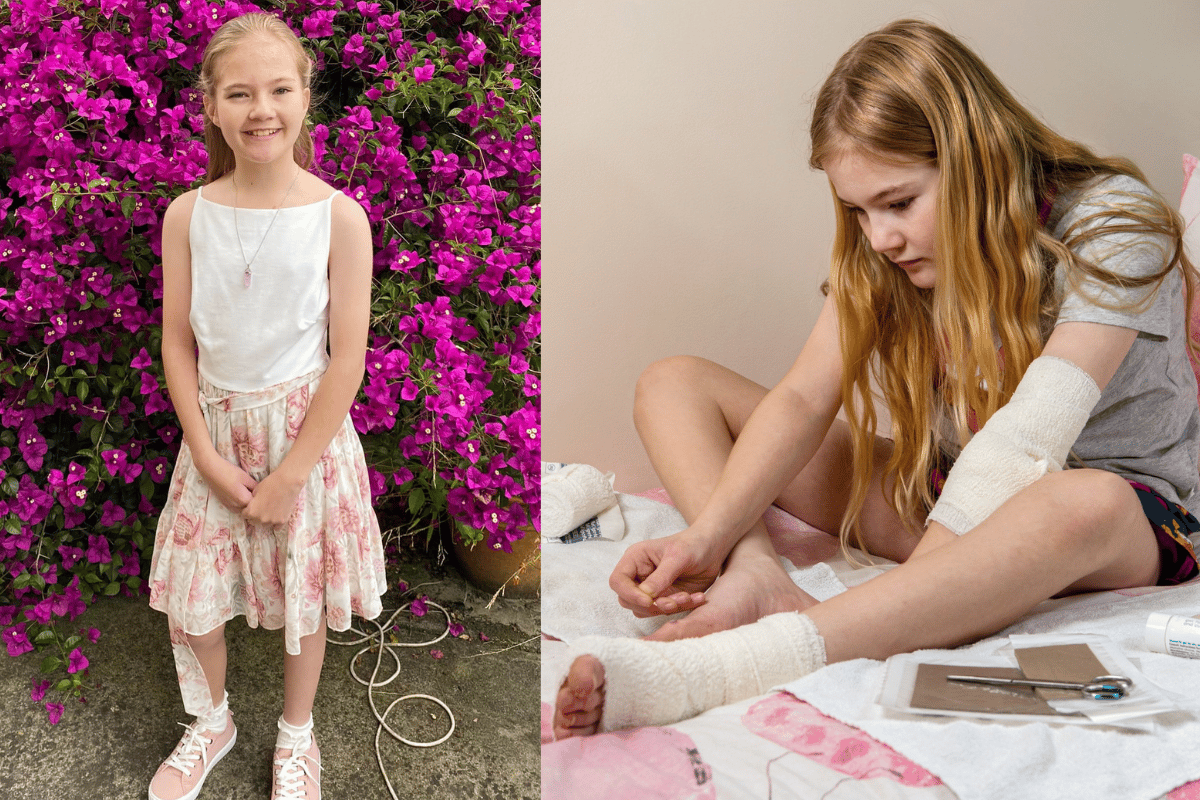
When Melanie first saw a blister form on her daughter Zoe's ankle, she fainted. Because she knew straight away what that meant for her little girl's future.
Zoe has Epidermolysis Bullosa, often known by its abbreviation EB. It's one of the worst diseases that you have probably never heard of - a rare genetic skin condition that results in very fragile skin. The skin is so fragile that it can be injured easily, resulting in blisters and wounds - often occurring across the body, and sometimes in the mouth.
Kids like Zoe are often known as 'butterfly children' - because their skin is as fragile as a butterfly's wings.
The reason Melanie knew almost instantly her daughter had EB was because her husband David has it too.
"In the early days of our relationship, David and I went bowling with a group of friends and I noticed something on his hands. He told me he had eczema. Only later he felt comfortable to tell me about what it really was," Melanie said to Mamamia.
When David was born, his EB was very severe - his skin was almost red raw. And throughout his life, his EB has gone through stages from manageable to really painful.



